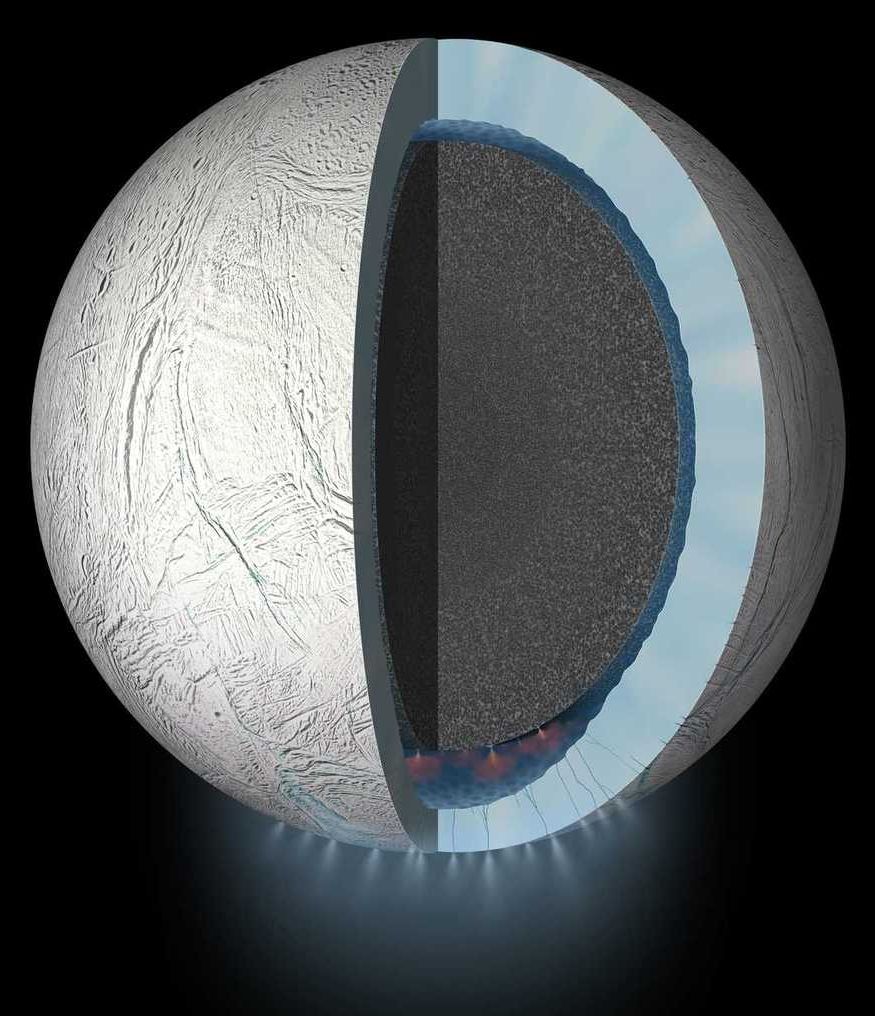Enceladus’ subsurface ocean composition hints at habitable conditions. A Southwest Research Institute team developed a new geochemical model that reveals that carbon dioxide (CO2) from within Enceladus, an ocean-harboring moon of Saturn, may be controlled by chemical reactions at its seafloor. Studying the plume of gases and frozen sea spray released through cracks in the moon’s icy surface suggests an interior more complex than previously thought.
“By understanding the composition of the plume, we can learn about what the ocean is like, how it got to be this way and whether it provides environments where life as we know it could survive,” said SwRI’s Dr. Christopher Glein, lead author of a paper in Geophysical Research Letters outlining the research. “We came up with a new technique for analyzing the plume composition to estimate the concentration of dissolved CO2 in the ocean. This enabled modeling to probe deeper interior processes.”
Analysis of mass spectrometry data from NASA’s Cassini spacecraft indicates that the abundance of CO2 is best explained by geochemical reactions between the moon’s rocky core and liquid water from its subsurface ocean. Integrating this information with previous discoveries of silica and molecular hydrogen (H2) points to a more complex, geochemically diverse core.
